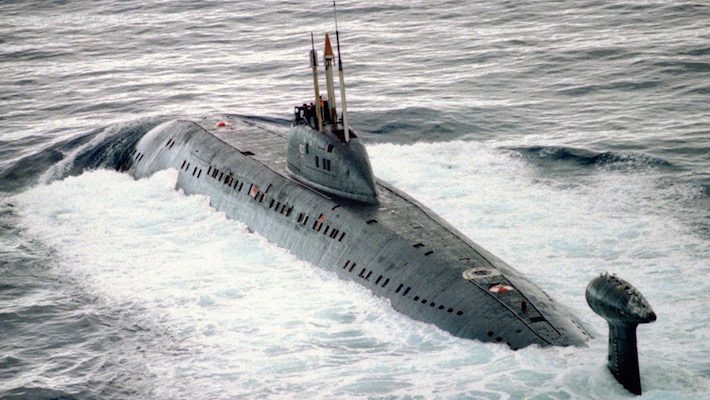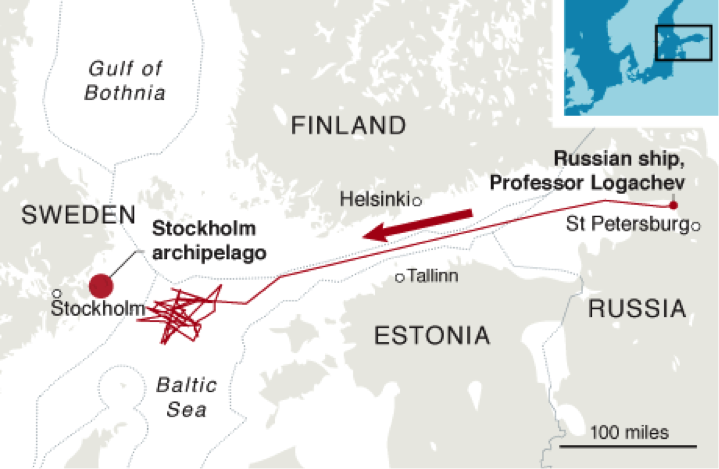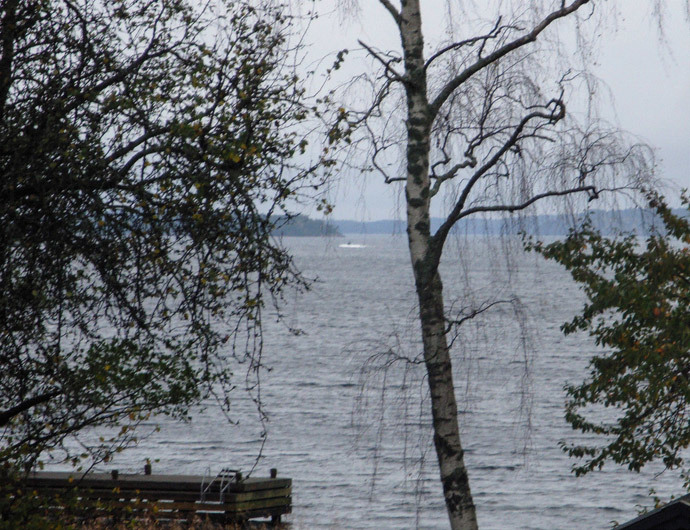
Playfully termed, the ‘Hunt for Reds in October’, the week long search for underwater foreign activity in Swedish waters has recently been called off. Whilst the searching activity may have ceased, there is much to be said about the nature of this intriguing geopolitical incident.
Needless to say, Sweden have a long history of hunting Soviet submarines in their waters. During the Cold War, the Baltic was alive these underwater machines and the Swedish military mobilised on numerous occasions to hunt for them and drive them out. In this latest incident however, the target of the Swedish search operation is somewhat more mysterious. Indeed, it appeared throughout the process that no one was entirely sure what was being searched for (let alone hunted). Rear Admiral Grenstad has stated that ‘There is something in our waters that shouldn’t be…it could be a submarine, or a smaller submarine, divers using some sort of moped like underwater vehicle, and divers that do not have business on our territory’, whatever it is, Grenstad asserted that Sweden ‘hate[s] the fact we have something in our waters’.
This ‘something’ is depicted in the widely circulated and publicised image below, the white crest of the waves drawing the eye to the dark man-made object at the centre. Whilst it is now believed to have left Swedish waters, three other sightings of submarine like activity were also reported. The result was a search and intelligence gathering operation not seen in Swedish waters since the end of the Cold War. The Swedish archipelago was alive with naval vessels equipped with underwater sensing devices, the sky filled with the noise of search helicopters, whilst divers were reportedly seen plunging into the harbour at Sandhamn, one of the 30,000 islands off Stockholm. Meanwhile, on the shores, the public were enlisted as geopolitical agents, encouraged to look to the waves rather than the skies and respond to the Rear Admiral’s call to anyone who may be in the archipelago ‘to see to it that you have a camera or camera phone’ handy to gather intelligence should anything surface.
Whilst Sweden has carefully avoided pointing the finger, Russia are widely believed to be responsible for the incursion with defence officials and analysts suggesting that it could be one of Russia’s midget submarines – the Triton or the Pianah – both used by military divers for covert missions. Russia have recently conducted a number of aerial incursions in Swedish airspace amidst rising tensions and hostilities over their involvement in the Ukraine crisis. It also has several submarines based in Kaliningrad, a Russian enclave bordered by Poland and Lithuania and facing out to Sweden, as well as a much bigger force near Murmansk on the Kola Peninsula. To add fuel to the fire, a Liberian-flagged, Russian owned, oil tanker was charted zigzagging through the seas ‘as if searching for something’ whilst a research vessel, The Professor Logachev, was tracked heading towards Sweden from St Petersburg, turning off its transponder as it travelled.
 The route of the Russian ship, The Professor Logachev
The route of the Russian ship, The Professor Logachev
A senior official in Sweden’s Governmental Defence Research Agency has suggested that the sub could have been mapping the rugged underground terrain of the archipelago for places to hide resources and assets in case of naval conflict in the Baltic, or perhaps it marked a return to Russian posturing, the incursion a political demarche to test the water with Sweden’s new centre-left government.
Despite the elusiveness of the ‘something’, the practice of searching is extremely revealing. Not only have these unknown submerged mobilities harked a return to cold war lexicon and mentalities, (hunts for reds in October and the invocation of ‘cloak and dagger’ operations being prime examples) but their wider geopolitical connotations should also be noted. Sweden have announced that they will increase military spending; over the water Estonia have stepped up surveillance of their territorial waters; and in Latvia, their Foreign Minister tweeted that the events in ‘Swedish territorial waters may become a game changer of the security in the whole Baltic Sea region’. Whilst the powers at be undoubtedly know more than is in the public domain, there is certainly something to be said here about the power of the unknown. Military assets have been mobilised and investments in future assets made because of this unknown entity. The ‘something’ gains agency, its fleeting movements setting into motion a range of events, affects, and possible futures, whilst also placing a premium on disciplines such as oceanography, underwater geology, and related practices that may enable ‘seeing in the sea’.
It is not just military assets, ordinary citizens, and academic disciplines that are mobilised but information too. Rumours abounded and as Grenstad asserts ‘everybody is speculating – that’s what you get you you’re submarine hunting’. As an example, the media widely reported that on the island of Korso, troops were searching for a mysterious man dressed in black, the inference being that he could have been a diver, dropped off by a submarine in a Cold War style operation. The man in question was a trout fisherman from Stockholm. Information circulated about the location of the mystery object emerging in the water was also deliberately misleading. A Swedish military spokesman stated that ‘wrong information’ was released about the photo ‘so as not to aid a foreign power.’ The official Russian government newspaper, Rossiiskaya Gazeta, are too circulating their own version of events, suggesting that Sweden should look closer to home at the Dutch, questioning whether there was a submarine at all, and stating “either Sweden’s echo location equipment is working badly or, as the old saying goes, the eyes of fear see danger everywhere”. Perhaps this last statement serves to remind Sweden of an incident in 2011 where a ‘foreign sub’ sighted in Baggensfjärden in Nacka was later identified as a raft frozen in moving ice.
The process of hunting for ‘something’ in Swedish territorial waters not only reveals the unruly power of the Baltic Sea to obfuscate, obscure and conceal – to perpetuate and facilitate this game of ‘underwater hide and seek’, but demonstrates the importance of attending to the agency of missing or unaccountable mobilities. The unknown entity potentially moving in Sweden’s waters has mobilised assets both now and in the future, citizens, disciplines, and information highlighting the need to engage with unmapped mobilities that do not leave concrete traces, that may be captured momentarily in a photograph before disappearing, and which ultimately produce untraceable mobilities that are lost in the cloaking matter of the sea.
Further Reading on E-International Relations
- Cold War Heritage in Sweden: Pastime Threats, Cosy Cavers and Gendered Nostalgia
- Identity and Foreign Policy: Competing Narratives in Swedish State Autobiographies
- The Ideas Behind Putin’s War in Ukraine
- Sweden’s Role in International Security Affairs: Officially Non-Aligned but Ready to Serve
- Russia’s War in Ukraine Points to Another Historical Blunder
- Russia’s War Goals in Ukraine
